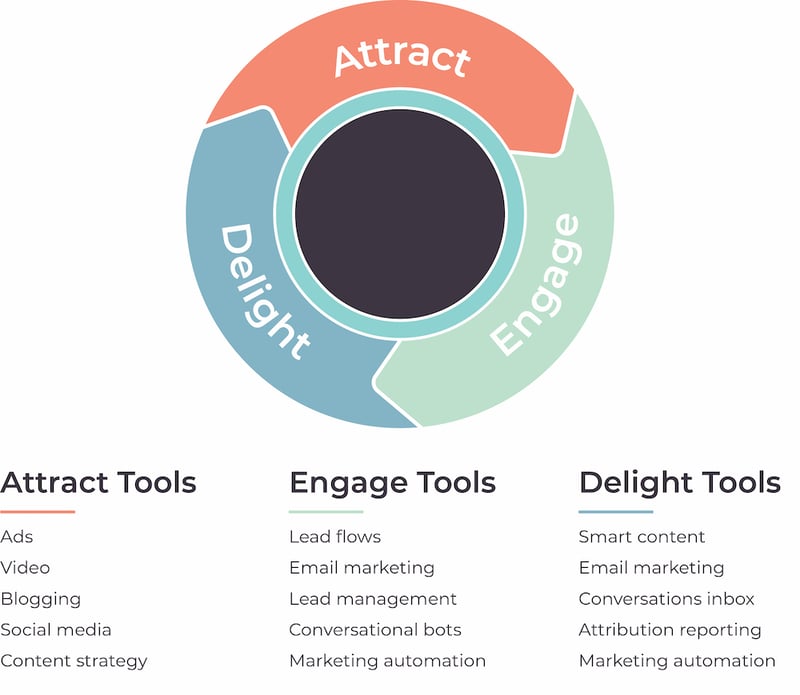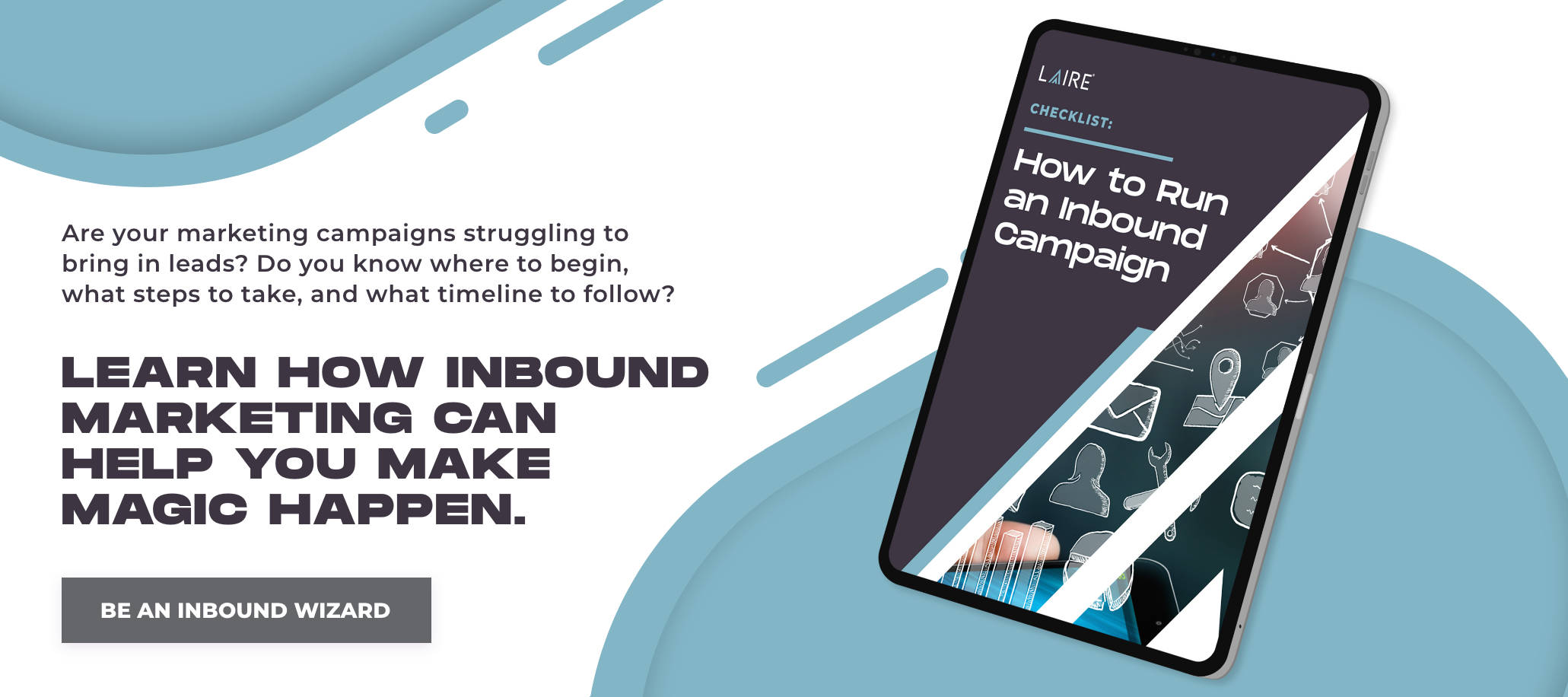Inbound marketing is a powerful marketing strategy designed to help you grow your business by building meaningful, lasting customer relationships. But despite its effectiveness, this strategy is not a magic wand and won’t allow you to get results at the push of a button. It’s a system that needs time to work.
Inbound Marketing Is Not a Quick Fix
Inbound marketing is rooted in customer relationships and involves three key steps: attracting, engaging, and delighting.

- Attract: This stage focuses on attracting potential customers to your business. It involves creating valuable content that resonates with your target audience and sharing it through various channels.
- Engage: In this stage, you need to nurture the relationship you've built with your potential customers to build trust and credibility. This involves providing them with more personalized content, answering their questions, and offering solutions to their problems.
- Delight: This stage involves delivering exceptional customer service, providing ongoing support, and engaging with your customers on a regular basis. The goal is to turn them into loyal brand advocates who will recommend your business to others and help you attract more customers through word-of-mouth marketing.
But as you can imagine, developing valuable content to attract and engage potential customers and keep them coming back for more isn’t something you can do overnight. Even in the world of artificial intelligence (AI) and ChatGPT, churning out blog after blog won’t do you much good if your aim is real, long-term relationships with customers who will advocate for your business.
This relationship development and nurturing, while a key pillar of inbound marketing, takes time, consistency, and patience. But, it’s well worth the wait.
Factors That Affect Inbound Marketing Results
While inbound marketing can be highly effective, there are several factors that can impact its success.
Your Overall Marketing Strategy
A solid overall marketing strategy can greatly improve your chances of successful inbound marketing campaigns by providing a clear direction and focus for your efforts.
A comprehensive marketing strategy involves researching and understanding your target audience. This includes their demographics, preferences, pain points, and behavior patterns. With this knowledge, you can create content and campaigns that speak directly to your audience's needs and interests, making them more likely to engage with your brand.
This knowledge will also help you identify the types of content that resonate with your audience and the channels through which they prefer to consume that content. This can help you create more effective content that generates more leads and conversions.
Additionally, a solid marketing strategy ensures your brand messaging is consistent across all channels and campaigns. This consistency builds trust and credibility with your audience, which is essential for effective inbound marketing.
Content Quality and Relevance
Your potential leads are getting information from everywhere — including from your competitors — so you need to know how to stand out. The best way to do this is by providing them with informative, engaging, and valuable content.
Your content should be well-written and visually appealing, with a clear call to action.
You’ll also want to center your content around the questions and queries your audience is asking. This is done through search engine optimization (SEO), which is the process of optimizing content to rank higher in search engine results pages (SERPs). SEO is critical in inbound marketing, as it helps your content actually get discovered by potential customers.
With inbound marketing, every blog post you create and promote is a chance to reach new members of your target audience and nurture your current customers. Building a library of optimized content that resonates with and addresses the pain points and needs of your audience is what will keep them coming back to your website.
All in all, committing to creating quality content and expressing yourself as a thought leader in your industry will pay off for years to come in the form of higher traffic to your website, more subscriptions to your blogs and emails, and more leads to your sales funnel.
Consistency
Consistency is key to success with inbound marketing. Consistency builds trust with potential customers and helps to establish your business as a reliable source of information.
Your content should be published on a regular schedule, and the messaging and branding should be consistent across all channels. This is not only true for blogs but also for social media.
Social media can be an effective channel for inbound marketing, but it requires a strong presence and engagement with followers. Your business should have active profiles on relevant social media platforms, share high-quality content, and engage with followers by responding to comments and messages.
If you’re consistently publishing content and posting to social media, over time you’ll gather a ton of data, which you can analyze to assess what is and isn’t working. By regularly testing and optimizing your marketing efforts, you’ll be better equipped to make data-driven decisions and achieve inbound marketing success.
You’ve Got to Be In It for the Long Haul
Because the inbound marketing process is not something you can simply “set and forget,” it may be tempting to spend your marketing budget on something that typically provides quicker wins, like paid advertising.
But as the saying goes, “don’t put all your eggs in one basket.” Although sponsored ads, social media posts, pop-ups, or other promoted multimedia can help you expand your reach and generate more traffic, they should be one part of your overall inbound marketing strategy.
We’ve said it once, and we’ll say it again. Inbound marketing requires work, time, and persistence — but the payoff is worth it. You will have fostered relationships with customers who understand your value, truly want to work with you, and know you can help them succeed.
Tips for Measuring Inbound Marketing Success
Measuring inbound marketing success can be challenging, but here are some tips that can help:
- Define your goals: The first step in measuring inbound marketing success is to define your goals. What do you want to achieve with your inbound marketing efforts? Is it to generate leads, increase website traffic, improve engagement, or boost sales? Once you have clear goals, you can measure your success against them.
- Set up tracking and analytics: Use tools like Google Analytics to track your website traffic, conversions, and other metrics. Set up goal tracking to measure the specific actions you want users to take on your website, such as filling out a form or making a purchase.
- Track your leads: Use a customer relationship management (CRM) system to track your leads and their interactions with your website and marketing materials. This will help you understand which marketing channels are driving the most leads and which ones are not as effective.
- Monitor social media engagement: Use social media monitoring tools to track engagement on social media platforms. This will help you understand which types of content resonate with your audience and which social media channels are driving the most traffic to your website.
- Measure your ROI: Measure your return on investment (ROI) to determine whether your inbound marketing efforts are paying off. Calculate the cost of your marketing efforts and compare it to the revenue generated from those efforts.
- Continuously analyze and adjust your strategy: Use the data you collect to continuously analyze and adjust your inbound marketing strategy. Identify what is working and what is not, and make changes accordingly.
Lastly, with inbound marketing, remember that results are cumulative. Having one happy, supported, and informed customer will ultimately lead to more.
On Your Inbound Marketing Journey, Patience Pays Off
The inbound marketing process is about building trust and not skepticism with your prospects; being respected and not ignored by your customers; and outsmarting and not outspending your competitors.
Inbound marketing is so effective that nearly 93% of companies use it to increase their website traffic. That’s a chance worth taking. In the end, you will have long-term relationships with customers who understand your value, enjoy working with you, and share their great experiences with others.
Take the next step to build lasting relationships with your customers and download our free Inbound Marketing Checklist today:


